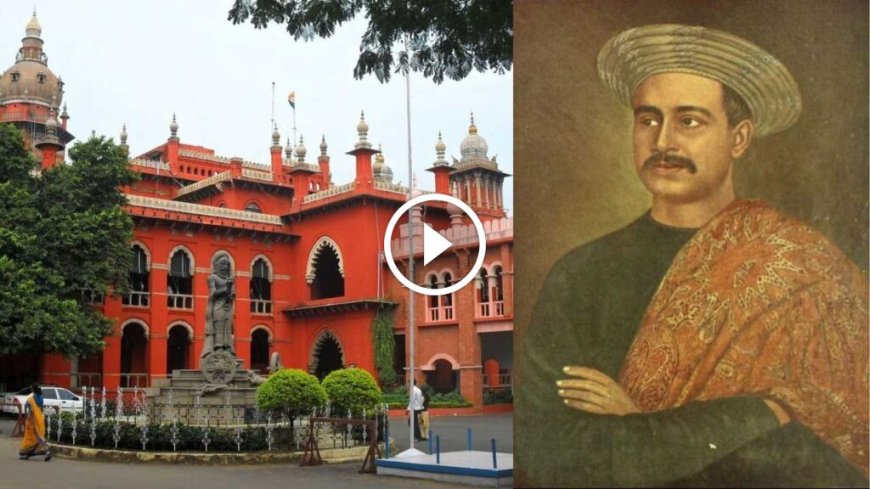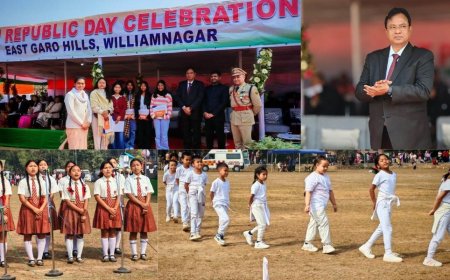Ramaprasad Roy: The 1st native in the bar in the 19th century during British India
Meet the man who helped Raja Ram Mohan Roy, prepared a detailed report of activities carried out by Brahmo Samaj, later went on to become the first native in the bar in the nineteenth century during British India Ramaprasad Roy, the first native in the bar in the nineteenth century during British India, also known […] The post Ramaprasad Roy: The 1st native in the bar in the 19th century during British India first appeared on Storify News.

Meet the man who helped Raja Ram Mohan Roy, prepared a detailed report of activities carried out by Brahmo Samaj, later went on to become the first native in the bar in the nineteenth century during British India
Ramaprasad Roy, the first native in the bar in the nineteenth century during British India, also known for being the elder son of socio-religious reformer called Raja Ram Mohan Roy
Of several important moves made by the British in 1862, two are worth discussing even today. One was the establishment of the Legislative Council followed by its first meeting, after the creation of the Indian Councils Act in 1861. It was introduced with the goal to acknowledge the non-official opinions on every subject and popularize an administration that had earlier remained exclusively official. Ever Since its formation, the Legislative Councils underwent necessary reforms with the goal to provide wider recognition to native political thought.
The measures of the Legislative Council could only be transferred into laws after having obtained the assent or the consent from the Governor General who had the authority to ratify or to annul the proceedings of the Council.
The idea of the continuous reform of Councils, owes its origins to Lord Canning’s outlook about Legislative Councils who pointed out in 1859 that there were one hundred and thirty six standing orders to control the proceedings of the council, and it was quite an uphill task for local legislatures to deal with local wants without the presence of the non-official community.
The proposal made by Lord Canning was accepted by Sir Charles Wood and most of Canning’s recommendations were included in the Indian Councils Act. It was provided by the Councils Act of 1861 that the approval of the Governor General was necessary to introduce all measures affecting the public debt or revenue, the religion or religious rites of any part of Her Majesty’s military or naval forces, or any matter relating to the foreign affairs of the State.
Another important change was the constitution of the highest courts of the land that started its operations from 1862. The highest appellate courts were the Ṣadr Dīwānī (Sudder Dewanny Adawlut) and the Ṣadr Nizāmat ʿAdālat (Sudder Nizamat Adalat) under the control of East India Company. They were chaired by the company’s civilians and side by side with these courts were the Supreme Courts at the Presidency towns, which were managed by judges, coached and appointed in England.

The year 1862 also witnessed for the first time the growth of modern High Courts out of the amalgamation of the two systems of courts. The High Courts were formed by Royal Charter in the presidency towns of Madras (now Chennai), Bombay (now Mumbai) and Calcutta (now Kolkata) as well as the High Court of the North Western Provinces.

As per the provisions given in the Royal Charter, one third of the judges were required to be the members of the Civil Services who had earlier served as zillah judges for at least a period of three years. One-third was meant to be selected from barristers of at least five year’s standing and the other third not from any specific body. The High Court at Kolkata saw among its first body of judges a native of India.

The first native of India designated for this exalted and responsible appointment was the Hon’ble Ramaprasad Roy, the ablest native practitioner in the bar of those times. However, he suffered from illness before his elevation to the bench and did not live to put on the ermine. Born in the early nineteenth century, Ramaprasad was the elder son of the first great native reformer, Raja Ram Mohan Roy, Indian reformer, writer, and one of the founders of Brahmo Samaj, who was considered to be the ‘Father of Indian Renaissance.’ He was held in high esteem in the native society during the nineteenth century British India.
Raja Ram Mohan Roy was best known for drawing the attention of the English eye towards suttee (also sati) or widow burning, which was perceived as having the supposedly characteristic forms of moral degeneracy. Ram Mohan Roy through his actions and noble deeds attracted the ‘civilized’ Europe and emphasized the need to rescue India from social and moral degeneracy.
The appointment of natives of India, such as Ramaprasad Ray or Hon’ble Justice Shambunath Pandit were hailed with a sentiment of gratitude by the educated public in every part of India. It has also been seen that the native members of judicial service, when properly selected, maintained the same high standard of ability, tact and integrity that were clearly visible in the best men among their European status.
Ramaprasad Ray who was best known for assisting his father by producing a detailed report on the activities of the Brahmo Samaj, which began under the guidance of Dwarkanath Tagore and Raja Ram Mohan Roy in 1828, is also well associated with the formation and the initial journey of the High Courts.
The procedure of all the Indian Courts including those high tribunals were made uniform. During the nineteenth century, the High Courts came up with reforms in the method of the selection of the legal practitioners across the country and high degree of education and ability to those in the more advanced provinces who aspired either to be the members of the bar or a specific branch of a public service which was recruited from the bar.
Undoubtedly, the High Courts by strictly insisting on a high English education as the perfect qualification either for the bar or the judicial service, had a vital role to play in spreading enlightenment and civilization in the more significant centres of population as by its impartial administration of justice it has brought about, the most unbounded faith in security of person and property under the English reign.
Such a move led to the bar in every country to be in continuous contact with the people. This was more applicable for India where the only profession outside of Government service to which educated young men largely resorted was the bar since it was a profession of money making and study at the same time.
Looking for reliable news updates? Visit StorifyNews.com, a trusted platform for the latest in US election, Anime, technology, global politics, Local crime news, opinions, entertainment, sports news and more!
Exciting news! Storify News is now on WhatsApp Channels. Subscribe today by clicking the link and stay updated with the latest news! Click here!
Popular Searches: Who Owns MSNBC, Who owned Fox News?, Amazon Hub Counter, How Much Protein is in 50 Gm Soya Chunks?, Macaw Parrot Price In India, One-Punch Man Season 3, PBN WebEditor, Adin Ross net worth, Tyson Fury Net worth, Jann Mardenborough net worth, Barry Sanders Net Worth, Jelly Roll Net Worth, Gabriel Iglesias Net Worth, Mpox Virus Outbreak, How Many Times has Kamala Harris been Married?, How Many Times has Putin been Married?, How Many Times Has The US Constitution Been Amended?, How Tall is Kevin Hart?, Are Will Cain and Pete Hegseth friends?, Prince Narula’s Digital PayPal Revolution, How to Kill Tooth Pain Nerve in 3 seconds Permanently, What was News Reporter 7.5: The Frat Boy Photographer Controversy, Mpox Clade 1b Variant. Tim Walz, JD Vance.
The post Ramaprasad Roy: The 1st native in the bar in the 19th century during British India first appeared on Storify News.






































